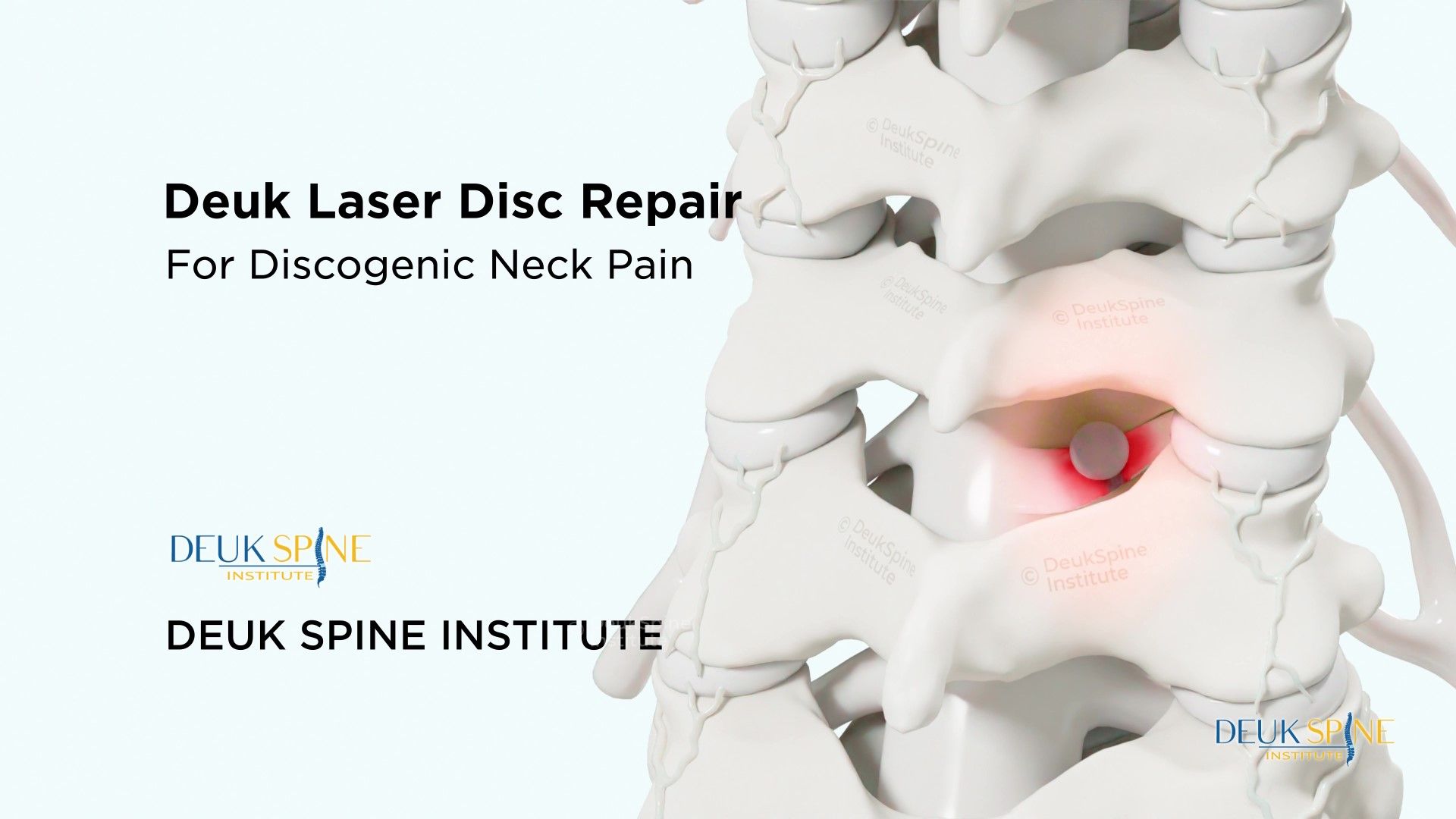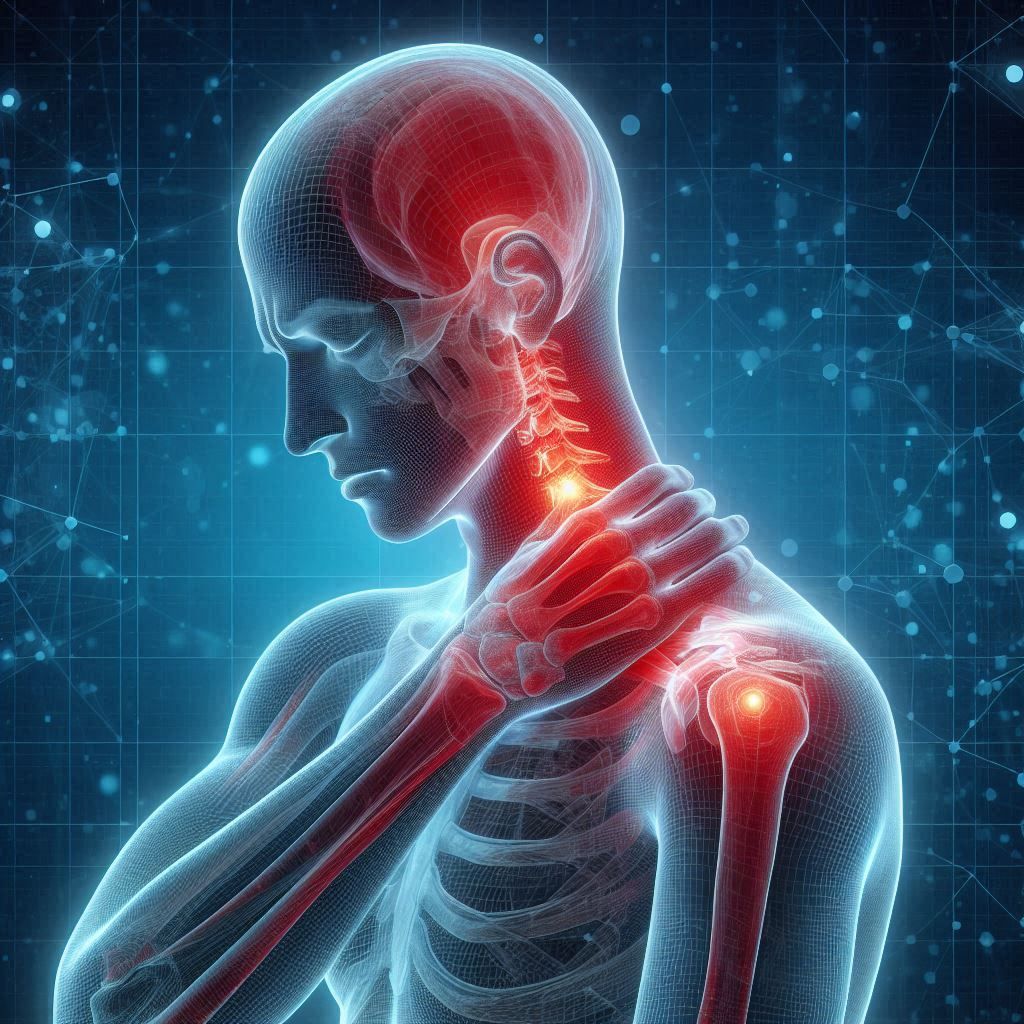Unlock the Mystery of Your Chronic Neck Pain
If you have experienced neck pain that persists for more than a few days, you know how debilitating it can be. When that pain lingers beyond a standard recovery period, it shifts from acute to chronic. In the field of modern spine care, chronic neck pain is specifically defined as discomfort that lasts longer than six weeks.
For patients suffering through this ongoing discomfort, the diagnostic journey can feel overwhelming. Various specialists tell many patients that their pain could be caused by one of dozens of conditions, including fractures, infections, tumors, or muscle spasms. Spine specialists have identified over 30 potential causes of chronic neck pain. However, as Dr. Deukmedjian, CEO and founder of the Deuk Spine Institute, points out, the overwhelming majority of chronic neck pain can be traced back to just two core anatomical structures.
Understanding the root cause is the critical first step toward achieving permanent relief. For 95% of individuals suffering from chronic neck pain, the problem lies not in the degeneration and injury of the cervical discs and facet joints. These two areas are responsible for your ongoing discomfort.
The Cervical Spine: Anatomy and Injury Hotspots
The cervical spine, or neck, is a sophisticated structure of seven vertebrae (C1-C7) designed to support the head’s heavy weight and facilitate its incredible range of motion. Dr. Deuk’s analysis in 30 Causes of Neck Pain focuses on the six intervertebral segments that are most susceptible to chronic injury: C2-3, C3-4, C4-5, C5-6, C6-7, and C7-T1.
Discover the Root Cause of Neck Pain
Within this structure, two components bear the brunt of everyday stress and age-related wear:
- Intervertebral discs: These six discs act as hydraulic shock absorbers between the vertebrae. They allow flexibility and prevent the bones from grinding together. The intervertebral discs are the primary source of pain for most patients.
- Facet joints: These small, stabilizing joints sit on the back, or posterior side, of the vertebrae. Facet joints guide neck movement, allowing rotation and extension while preventing excessive forward or backward motion.
When pain is chronic, one or both of these structures is typically damaged, inflamed, and actively sending distress signals to the brain.
Discogenic Pain: The Majority of Chronic Neck Cases
Discogenic pain is the diagnosis given when the pain originates from an injured or degenerated intervertebral disc. It is the single most common source of chronic neck pain, representing a staggering 85% of all chronic cases encountered in clinical practice.
The discs are more than passive cushions; they also contain many nerve endings that cause you to feel pain when the area is damaged. For example, the outer wall of the disc (the annulus fibrosus) becomes compromised, and the inner material (nucleus pulposus) can push out, causing two major problems that lead to chronic symptoms:
Mechanical Compression and Chemical Irritation (Radiculopathy)
As the disc material bulges or herniates, it can impinge directly upon a nearby spinal nerve root. The mechanical compression causes the classic radiating pain, numbness, tingling, or weakness that often travels down the arm. This condition is known as cervical radiculopathy.
More subtly, the disc’s core contains inflammatory substances that are highly toxic to the sensitive nerve roots. When a disc ruptures, it leaks these inflammatory chemicals onto the nerves, causing immediate and intense irritation. The inflammation is a potent driver of chronic, intractable pain, often leaving patients in agony even before any significant nerve compression occurs.
The Most Common Injury Sites
Of the six cervical discs, three levels are subject to the highest amount of shear stress and rotational force, making them the most vulnerable to injury:
- C5-C6: Are the most commonly injured cervical discs. It is critical to note that the degeneration found at this level is often associated with the most significant symptoms, likely due to the biomechanical stress this area absorbs (Predictive factors associated with chronic neck pain.
- C6-C7: This is the next most common level to sustain a chronic, painful injury.
- C4-C5: This disc is the third most frequently injured, often seen in tandem with degeneration at lower levels of the spine.
The majority of patients suffering from chronic neck pain due to a compromised disc will find their pathology localized at these three segments. When diagnosing pain, specialized procedures such as cervical discography can pinpoint the exact painful disc segment.
Facet Joint Pain: The Arthritic Culprit
Disc injury dominates the chronic pain statistics; the second leading cause of long-term neck pain is injury to the facet joints, which accounts for approximately 10% of chronic cases.

The Anatomy of Facet Joint Arthritis
Facet joint pain is exceptionally common in patients who have a history of neck injury or spine trauma, such as whiplash or athletic injury. A capsule surrounds the joint itself. When this capsule is torn or overstretched, it destabilizes the joint, leading to a cascade of degenerative changes.
Over time, the initial injury can lead to arthritis in the joint. It is arthritis—the wear and tear and the resultant inflammation in and around the facet joint—that causes persistent pain and stiffness during movement.
Distinct Symptoms and Vulnerable Levels
The pain associated with facet joints is highly characteristic, often allowing clinicians to pinpoint the source through a detailed history and physical exam:
- Location: Facet joint pain typically occurs on the sides of the spine and can manifest on the right, left, or both sides simultaneously.
- Movement: The pain is reliably worse with rotation of the head and neck and worse with extension (tilting the head backward). If you find that checking your blind spot while driving causes a sharp, localized ache on one side of your neck, a facet joint is often the culprit.
Similar to the discs, certain facet joints are far more likely to be injured than others, with the C5-6, C6-7, C4-5, and C7-T1 levels being the most common sites of facet joint-related pain and arthritis.
Diagnostic nerve blocks and imaging are reliable methods for confirming a facet joint as the source of pain, providing strong evidence of diagnostic accuracy when performed correctly.
The Lifestyle and Habits That Drive Chronic Pain
Anatomical changes in the discs and facet joints don't happen on their own. While age is a factor, the chronic strain and poor habits of modern life significantly accelerate this damage.
Patients often find themselves in a cycle of pain, trying temporary fixes like heat, ice, or over-the-counter pain relievers without addressing the mechanical cause.
The "Tech Neck" Epidemic
Today's most pervasive risk factor is sustained, awkward positioning. Every time you look down at a smartphone, tablet, or laptop, you are placing immense gravitational strain on your cervical discs, particularly at the C5-C6 and C6-C7 levels. This chronic forward hanging position, "Tech Neck,” speeds up disc dehydration and tear formation, leading directly to the discogenic pain that affects many chronic sufferers. Jobs that involve repetitive neck movements, awkward postures, or overhead work also put extra strain on the neck and are known risk factors for cervical spondylosis.
Inflammation and Systemic Factors
Chronic neck pain is also strongly associated with lifestyle choices that increase systemic inflammation. Studies have shown a link between chronic neck pain and factors like:
- Smoking: Tobacco use has been linked to increased neck pain and faster cartilage loss in joints.
- Abnormal BMI: Maintaining an unhealthy body mass index (BMI) can increase the risk of neck pain associated with cervical degenerative disease.
- Sedentariness: Avoiding an active lifestyle and remaining sedentary increases the likelihood of arthritic pain.
By understanding how daily habits contribute to the structural breakdown of the discs and joints, patients can better appreciate why simple physical therapy or medication often fail to provide permanent relief. They do not address the underlying cause, the damaged anatomy.
When Conservative Care Fails: The Path to Permanent Relief
Causes like fractures, tumors, infections, and muscle spasms account for less than 1% of chronic neck pain. This means the search for a diagnosis should focus heavily on the two main structures: the disc and the facet joint. When a clear, anatomical cause is identified, the focus can shift from temporary relief to achieving lasting restoration.
For years, patients suffering from discogenic pain or facet joint pain were often put on a path toward invasive procedures, including spinal fusion surgery. This approach often involves high costs and prolonged recovery and can lead to new pain down the road. Therefore, patients are urged to ask critical questions about the necessity of spinal fusion before proceeding with any spine surgeon.
For 95% of patients with chronic neck pain, modern, targeted, and minimally invasive procedures represent a far superior option for permanent resolution.
The Solution for Discogenic Pain: Deuk Laser Disc Repair®
The gold standard for treating discogenic pain is to address the disc injury directly without fusing the spine. The Deuk Laser Disc Repair® (DLDR®) procedure is one of the best available treatments for chronic neck and back pain.

This surgery is a minimally invasive endoscopic procedure in which the surgeon uses a high-definition camera and a laser to precisely vaporize damaged, inflamed disc material and remove annular tears that are causing pain. This technique preserves motion, relieves nerve compression, and eliminates the inflammatory source of pain, offering a safe alternative to traditional discectomy or spinal fusion surgery.
The Solution for Facet Joint Pain: Deuk Plasma Rhizotomy®
For chronic neck pain arising from arthritic facet joints, the recommended solution is the Deuk Plasma Rhizotomy®.
Deuk Plasma Rhizotomy® is a highly specialized version of a radiofrequency ablation (RFA). This technique disrupts the small nerves (medial branch nerves) that transmit pain signals from the arthritic facet joint. By targeting these nerves, the pain signal from the arthritic joint is interrupted, providing patients with long-term relief from stiffness and movement-related pain.
For patients with chronic neck pain, focus on two areas: Your intervertebral discs and your facet joints. By accurately diagnosing which of these two components is injured, you can bypass unnecessary treatments and ineffective surgeries that are contributing to the "Spine Fusion Epidemic" and pursue a definitive solution tailored to your specific anatomical problem.
The key to escaping chronic neck pain is recognizing that the problem is almost certainly anatomical, and the solution must be equally precise.

MAKE YOUR FIRST PAIN-FREE MOVE
If you’re seeking relief from lumbar pain, have been recommended for a TLIF spinal fusion, or are still dealing with chronic neck pain after a failed fusion surgery, we can help improve your quality of life and enable you to live pain-free.
Upload your latest MRI for a free review and a personal consultation with myself. Ara Deukmedjian, M.D., founder of Deuk Spine Institute and creator of the Deuk Laser Disc Repair® procedure.
